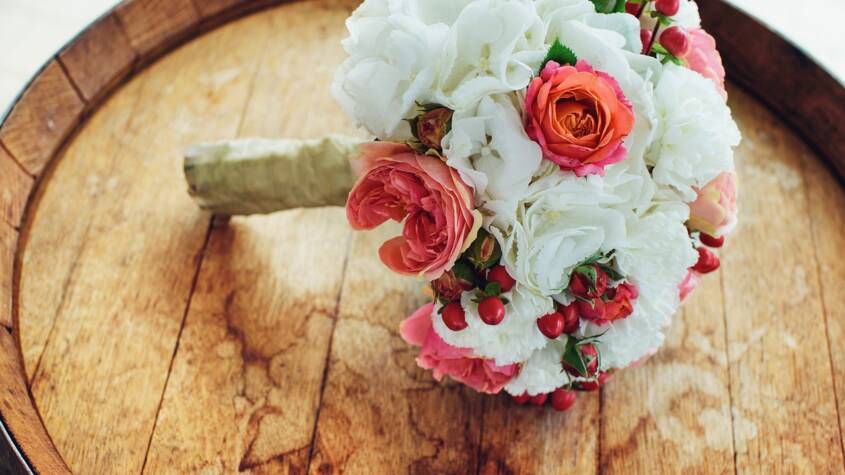
A sympathy bouquet serves as a thoughtful gesture during times of loss, conveying heartfelt condolences and support. These arrangements typically include flowers that symbolize compassion, peace, and remembrance, allowing the sender to express their feelings when words may fall short. Selecting the right flowers and design can make a significant impact, providing comfort to those grieving.
Understanding the appropriate flowers for a sympathy bouquet is essential. For instance, lilies represent the restored innocence of the soul, while roses convey love and respect. Choosing a mix of these flowers can create a meaningful bouquet that honors the memory of the deceased.
Creating a personalized touch by adding a heartfelt note can enhance the impact of the bouquet. This combination of flowers and words offers a sincere expression of sympathy, helping to connect with the recipient during a difficult time. Whether delivered to the home or funeral service, a carefully composed sympathy bouquet can be a source of comfort and solace.
Choosing the Right Sympathy Bouquet
Selecting an best sympathy bouquet requires consideration of flower types, colors, sizes, and cultural significance. Each aspect plays a crucial role in conveying respect and empathy during a difficult time.
Types of Flowers and Their Meanings
Certain flowers carry specific meanings that can enhance the message of sympathy. For example:
- Lilies: Represent purity and transience of life.
- Roses: Varied colors convey different sentiments; for instance, red symbolizes love, while white signifies innocence.
- Chrysanthemums: Often symbolize truth and life, particularly in many Asian cultures.
- Carnations: These flowers express a love for the departed and are commonly used in bouquets for funerals.
Choosing the right flower can provide comfort and show thoughtfulness in a time of grief.
Color Significance in Sympathy Flowers
Colors play a vital role in expressing emotions through flowers. Below are some common colors and their meanings:
- White: Purity and peace; often used to represent innocence.
- Blue: Calmness and tranquility; offers a soothing presence.
- Yellow: Represents friendship and joy; can add warmth to a sorrowful occasion.
- Purple: Signifies dignity and respect, making it suitable for honoring the deceased.
Selecting color combinations thoughtfully can amplify the message conveyed through the bouquet.
Appropriate Sizes and Arrangements
The size of the sympathy bouquet should match the setting and relationship to the deceased. Common arrangements include:
- Small bouquets: Best suited for personal tributes, often placed on a bedside or at a small gathering.
- Medium arrangements: Appropriate for family gatherings, funeral services, or during visitations.
- Large displays: Typically sent to funeral homes or churches, making a significant statement.
Choices in arrangements, such as standing sprays or wreaths, should also reflect the personality of the deceased or the preferences of the bereaved.
Cultural Considerations
Different cultures have unique traditions regarding flowers in times of grief. It’s essential to be aware of these to avoid unintentional insensitivity. For instance:
- In some Asian cultures, white flowers are preferred for mourning, while vibrant colors may be considered inappropriate.
- Certain religions may have specific flower types or arrangements that are customary for funerals.
Understanding these cultural nuances helps in selecting flowers that convey the right sentiment while honoring the deceased as well as their family’s traditions.
Etiquette and Presentation
When selecting a sympathy bouquet, understanding the appropriate etiquette and presentation is crucial. This section focuses on the timing for sending flowers, composing a meaningful card message, and the various delivery options available.
Timing for Sending Sympathy Flowers
Sending sympathy flowers should ideally occur as soon as one learns about the passing. This gesture provides immediate support to the grieving family.
Flowers can be sent on the day of the funeral or in the days following the service. Key periods include the day before the funeral and the first week of mourning, as these times can be particularly challenging for those grieving.
In some cultures, specific customs dictate when flowers are appropriate. Therefore, it is advisable to know the family’s preferences or follow general practices associated with different religions.
Writing a Thoughtful Card Message
A card message accompanying the bouquet should express sincere condolences. Using simple, heartfelt language is essential.
Phrases such as “thinking of you during this difficult time” are fitting. Avoid clichés that may come off as insincere, such as “I know how you feel.”
Including a personal memory or characteristic about the deceased can make the message more impactful. Always sign with a name and offer support, such as “I’m here if you need anything.”
Delivery Options and Protocols
Several delivery options are available for sympathy flowers, depending on the preferences of the sender. Online florists often provide same-day delivery, which is suitable for urgent situations.
Sending flowers to the funeral home is standard practice. It ensures they are present during the service. Sending directly to the family’s home can be a thoughtful gesture in the days following the funeral.
It is essential to ensure that the timing aligns with the family’s needs. If uncertain, consulting with a local florist can provide guidance on delivery protocols and best practices.
Recycling Drop Off: Essential Tips for Responsible Waste Disposal
Many communities offer recycling dropoff locations, providing an essential service for tho…









